Anatomy Of Chicken Wings
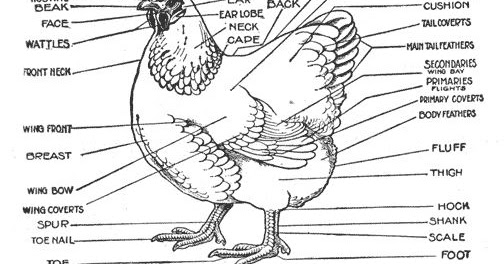
The anatomy of chicken wings consists of three different types of feathers that cover the wings. These feathers play an important role in the overall function of the wings. The large feathers, known as the primaries, are located on the outer part of the wing and are responsible for providing lift during flight. The long middle feathers, called the secondaries, provide stability and control. Lastly, the small feathers known as coverts, cover and protect the primary and secondary feathers. Understanding the anatomy of chicken wings is essential in recognizing their importance and maintaining the health of these crucial structures.
1 Chicken Wing Structure And Function
The structure of a chicken wing is designed to allow for flight and maneuverability. The bones in the wing, including the humerus, radius, ulna, and carpals, provide a framework for the attachment of muscles and support the bird’s wingspan. The muscles in the wing, such as the pectoralis muscle and the supracoracoideus muscle, work together to power the flapping motion during flight. Additionally, the ligaments and tendons in the wing help to stabilize and control the movement of the wing. Overall, the structure of the chicken wing is intricately designed to enable the bird to fly and navigate its surroundings.
2 Chicken Wing Feathers And Their Purpose
Chicken wing feathers serve multiple purposes for chickens. The primary function of these feathers is to enable flight. The primary feathers, located at the tips of the wings, are responsible for generating lift and providing stability during flight. They are larger and stronger than the secondary feathers, allowing for powerful wing beats.
Additionally, chicken wing feathers play a role in thermoregulation. They help to insulate the bird by trapping warm air close to the body, keeping the chicken warm during colder temperatures. Feathers also provide protection by acting as a barrier against external elements such as rain, wind, and debris.
In conclusion, chicken wing feathers are essential for flight, thermoregulation, and protection, allowing chickens to navigate their environment and survive in various weather conditions.
Types Of Chicken Feathers
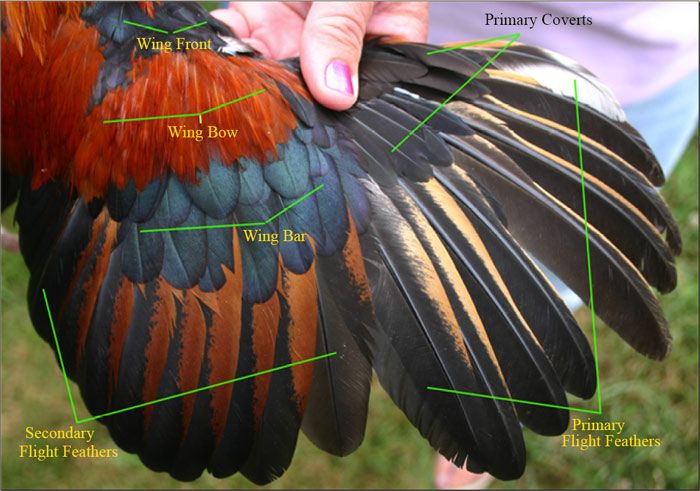
Chicken feathers can be classified into four main types: contour feathers, plumules, filoplumes, and bristles. Contour feathers are the most prominent and cover most of the chicken’s body, providing insulation and protection. Plumules are fluffy feathers found beneath the contour feathers and help in maintaining body temperature. Filoplumes are small and hair-like feathers that serve as sensory organs, providing information about the bird’s movements. Bristles are specialized feathers found around the face and help in sensing the environment. These different types of feathers work together to serve various functions for the chicken.
1 Primary Feathers On Chicken Wings
Primary feathers, also known as flight feathers, are the longest and strongest feathers found on a chicken’s wings. They are responsible for providing lift and stability during flight. These feathers are attached to the chicken’s wrist bone, or carpometacarpus, and extend outward when the wing is spread. The primary feathers are arranged in layers, with the larger feathers on the outer edge and the smaller feathers towards the center of the wing. They have a sturdy central shaft, or rachis, from which branches, or barbs, extend outwards, creating a v-shaped pattern. The barbs are further equipped with smaller structures called barbules, which interlock with each other, providing strength and flexibility to the feather. This interlocking structure is what allows the chicken to maintain its wing shape and generate lift during flight. Overall, the primary feathers play a crucial role in the chicken’s ability to fly and navigate its surroundings effectively.
2 Secondary Feathers On Chicken Wings
Secondary feathers, also known as covert feathers, are the feathers located behind the primary feathers on a chicken’s wings. They are responsible for providing additional lift and stability during flight. Unlike the primary feathers, secondary feathers are shorter and narrower in shape. They grow from the forearm area of the wing and are arranged in a layered pattern. The secondary feathers work together with the primary feathers to generate the necessary thrust and maneuverability for the chicken during flight. They play a crucial role in maintaining balance and control, allowing the chicken to navigate its surroundings effectively.
Growth And Molt Of Chicken Feathers
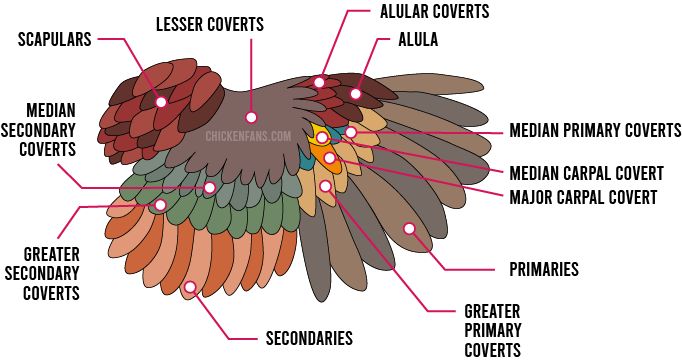
The growth of chicken feathers is a continuous process that occurs throughout the bird’s life. Feathers are made of keratin, a protein, and they grow from special follicles in the chicken’s skin. As the feathers grow, they go through different stages, starting with the pin feather stage, where they are still enclosed in a protective sheath.
Molting, on the other hand, is the process of shedding old feathers and regrowing new ones. Chickens typically molt once a year, usually in the late summer or early fall. During this time, the chicken’s feathers become dull and start to fall out. This is a natural process that allows new feathers to grow in their place. Molting can take several weeks to complete, and during this time, chickens may appear more vulnerable and have a decrease in egg production.
Molting is important for the health and well-being of the chicken. It allows them to replace old and damaged feathers, ensuring proper insulation and protection. Feather quality is vital as it helps regulate body temperature, provides insulation during cold weather, and assists in flight and maneuverability. Proper nutrition, including a balanced diet with sufficient protein, is essential for healthy feather growth and molting.
1 Feather Growth Cycle
The feather growth cycle in chickens is a continuous process that starts with the development of new feathers. It begins with the growth of pin feathers, which are still enclosed in a protective sheath. As the feathers mature, the blood supply within the shaft dries up, indicating that they are fully developed. At this point, the feather is ready to open up and become functional. The process of feather growth can take several weeks. During molting, old feathers are shed, and the cycle starts again with the growth of new feathers. This cycle ensures that chickens have a constant supply of healthy and functional feathers.
2 Molting Process And Its Importance
The molting process is an important natural phenomenon in chickens that involves the shedding and replacement of old feathers. During molting, chickens go through a period of feather loss, which may last for several weeks. This process is essential for the health and well-being of the birds as it allows them to replenish their feather stock and grow new ones. Molting also helps chickens conserve energy and divert resources towards other vital functions, such as building up nutrient reserves and preparing for the colder seasons. Proper nutrition and care during molting are crucial to ensure that chickens go through this process smoothly and emerge with healthy, functional feathers.
Poultry Wing Health And Care
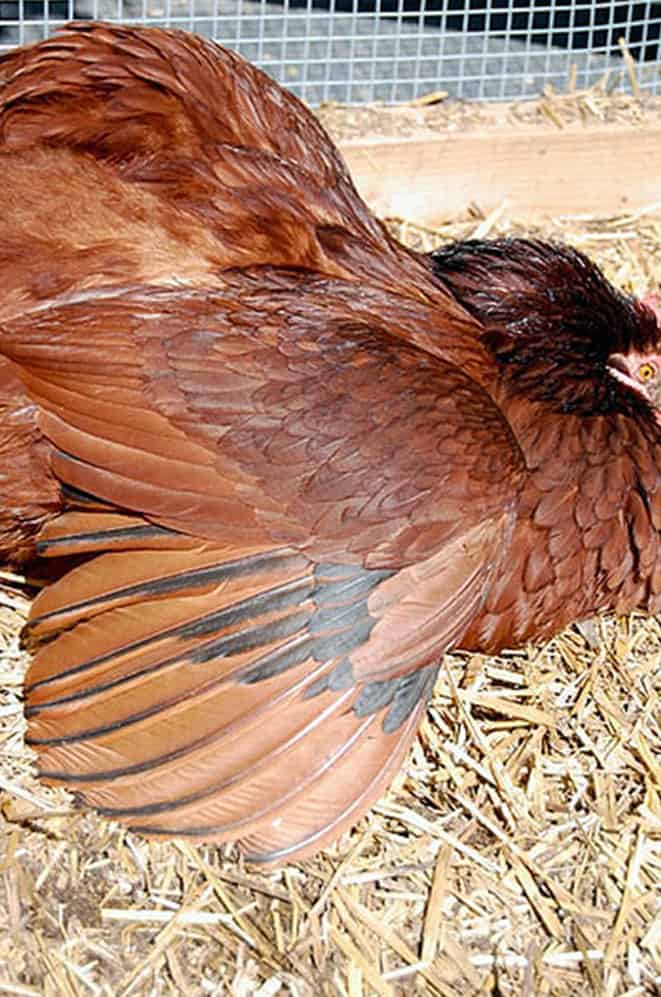
Proper care and attention to poultry wing health are essential for the overall well-being of chickens. Regular monitoring of the wings can help identify any potential health issues and address them promptly. It is crucial to check for signs of injury, such as cuts or bruises, as well as for the presence of external parasites like mites or lice. Trimming overgrown feathers may be necessary to prevent tangling or discomfort. Providing chickens with a clean and spacious environment, a balanced diet, and regular exercise can contribute to healthy wing development. Regular inspection and care will ensure that poultry wings remain strong and functional.
1 Wing Health Indicators
Maintaining the health of poultry wings is crucial for the well-being of chickens. Regular monitoring of wing health can help identify any potential issues and ensure prompt treatment. Common indicators of wing health include checking for any signs of injury such as cuts or bruises, as well as examining the wings for the presence of external parasites like mites or lice. Any abnormal behavior or reduced mobility in the wings should also be closely observed. By regularly assessing these indicators, poultry owners can ensure the overall health and functionality of their chickens’ wings.
2 Tips For Maintaining Healthy Chicken Wings
Maintaining healthy chicken wings is crucial for the overall well-being of poultry. To ensure healthy wings, here are two essential tips to keep in mind:
- Proper Nutrition: Providing a balanced diet rich in nutrients is vital for promoting healthy wing development. Ensure the chickens have access to a well-balanced feed that includes protein, vitamins, and minerals. A nutritious diet helps support feather growth and strength, keeping the wings in optimal condition.
- Regular Wing Inspections: Regularly inspecting the wings for any signs of injury or issues is essential. Check for cuts, bruises, or signs of external parasites like mites or lice. Promptly treating any injuries or infestations can prevent further damage and promote wing health.
By following these two tips, poultry owners can maintain the health and functionality of their chicken wings, ensuring that the birds lead a comfortable and active life.
Importance Of Chicken Wing Feathers
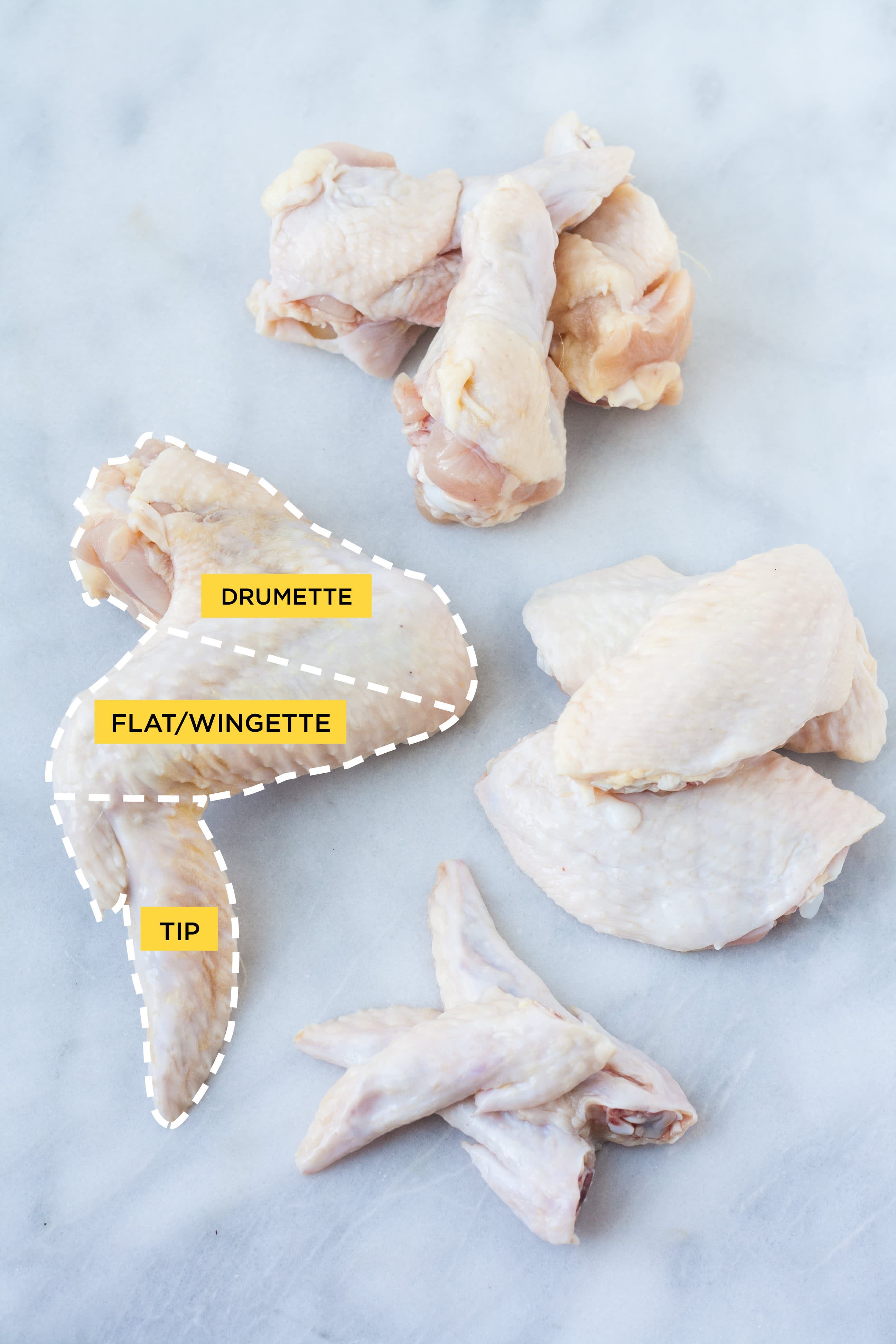
Chicken wing feathers play a crucial role in a chicken’s life. Firstly, they are essential for flight, allowing chickens to soar through the air and escape from predators. Additionally, these feathers provide insulation, helping to regulate body temperature and keep chickens warm during colder months. They also serve as protection, shielding the delicate skin underneath from sunburn and external elements. The different types of feathers on the chicken wings, such as primary and secondary feathers, work together to provide balance and stability during flight. Therefore, maintaining healthy and intact chicken wing feathers is vital for the overall well-being and survival of poultry.
1 Role Of Chicken Feathers In Flight
The feathers on a chicken’s wings play a vital role in their ability to fly. These feathers, known as flight feathers, are designed to provide lift and propulsion during flight. The primary feathers, located at the outer part of the wing, are responsible for generating lift as the chicken flaps its wings. They create the necessary airfoil shape, allowing the chicken to stay airborne. The secondary feathers, on the other hand, help in steering and stabilizing the chicken’s flight. Together, these feathers enable chickens to maneuver through the air and escape from predators or reach distant food sources.
2 Insulation Properties Of Chicken Feathers
Chicken feathers not only play a crucial role in flight but also serve as an incredible source of insulation for chickens. The numerous interlocking barbs and barbules found in feathers create a layer of air pockets that trap heat and provide excellent insulation. This insulation helps chickens regulate their body temperature by preventing heat loss in cold weather and minimizing heat absorption in hot weather. The down feathers, which are softer and fluffier, provide extra insulation by trapping more air. This remarkable insulation property of chicken feathers allows chickens to stay warm during chilly winters and cool during scorching summers, ensuring their comfort and well-being.
Conclusion

In conclusion, understanding the anatomy of chicken wings and the role of feathers in poultry is essential for raising healthy and thriving chickens. The different types of feathers, such as the primary and secondary feathers, serve specific functions in flight and insulation. Proper care and attention to wing health indicators can ensure the well-being of chickens. Chicken feathers provide excellent insulation properties, allowing chickens to regulate their body temperature in different weather conditions. By appreciating the importance of chicken wing feathers, poultry owners can better care for their feathered friends, ensuring their comfort and overall health.
Comparison Between Different Types Of Chicken Feathers
Chicken wings are composed of three main types of feathers: primary feathers, secondary feathers, and coverts. Primary feathers are the largest and longest feathers, located on the outer edge of the wing. They play a crucial role in flight, providing lift and stability. Secondary feathers are found closer to the body and help in steering and maneuvering during flight. Coverts are smaller feathers that cover and protect the base of the larger flight feathers. Each type of feather has its own unique structure and function, enabling chickens to glide through the air with ease.
Key Takeaways And Understanding Poultry Anatomy Through Chicken Wing Feathers
Understanding the anatomy of chicken wing feathers provides valuable insights into the overall structure and function of poultry. The primary feathers, which are the largest and longest feathers on the outer edge of the wing, play a crucial role in flight by providing lift and stability. The secondary feathers, located closer to the body, assist in steering and maneuvering. Coverts, the smaller feathers, protect the base of the larger flight feathers. By analyzing the different types of feathers and their specific functions, poultry enthusiasts can gain a deeper understanding of avian flight and the importance of maintaining healthy chicken wings.
FAQ About Feathers On Chicken Wings: Understanding Poultry Anatomy
Q: What is the purpose of feathers on chicken wings?
A: Feathers on chicken wings serve as insulation to regulate body temperature and provide protection against environmental elements.
Q: Do feathers affect the taste or texture of chicken wings?
A: No, feathers are removed before cooking chicken wings, so they do not impact the taste or texture of the meat.
Q: How many primary feathers are typically found on a chicken wing?
A: A chicken wing typically has 10 primary flight feathers that aid in flight and maneuverability.
Q: Are there differences in feather types between chicken breeds?
A: Yes, different chicken breeds may have variations in feather color, length, and texture based on their genetic makeup.
Q: Can feathers regrow if they are plucked from a chicken wing?
A: Yes, feathers on chicken wings have the ability to regrow if they are plucked or damaged, allowing for continuous feather renewal.
Q: How can understanding poultry anatomy help in cooking chicken wings?
A: Understanding poultry anatomy can help in properly preparing and cooking chicken wings, ensuring optimal flavor and texture in the final dish.

The Stone’s Sports Grill and Bar was Established on December 1, 2021. The Stone is a Sequel to another restaurant called Cornerstone’s First Edition in Tucumcari, NM. This particular venue is located on the Southeast side of Colorado Springs. The Stone is Wide Open. We have a large dance floor, multi-level stage, pool room, (5) dart boards, and a bar with a large selection of wine spirits and brews.